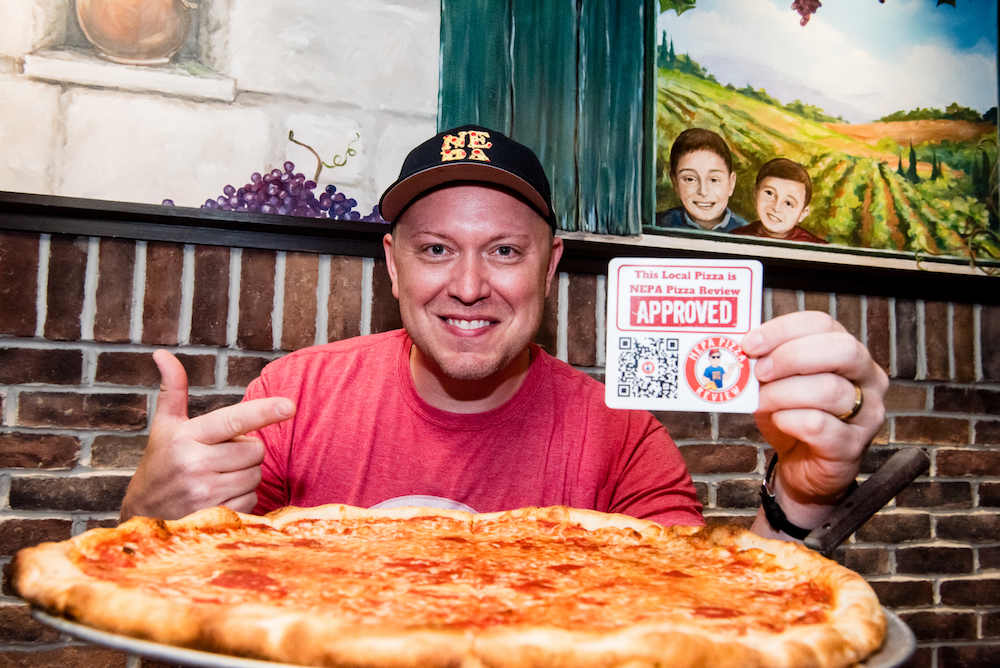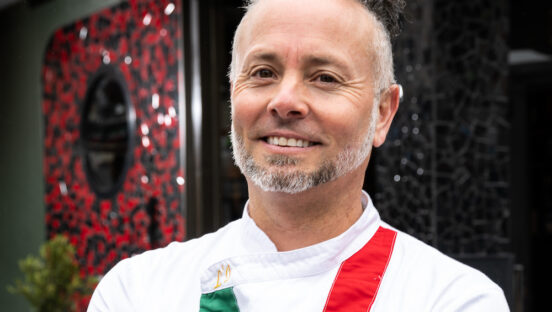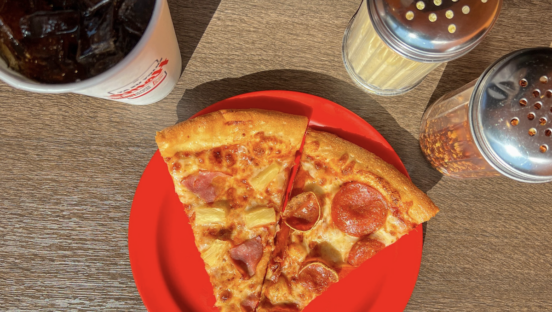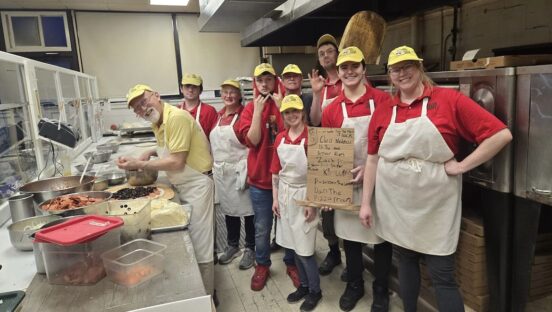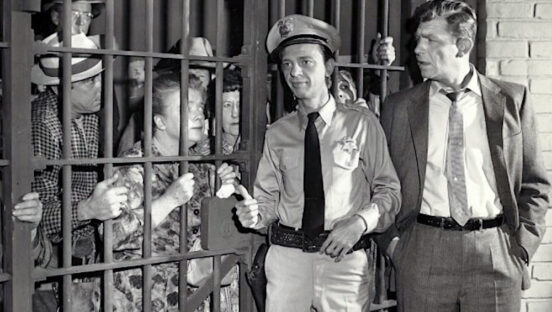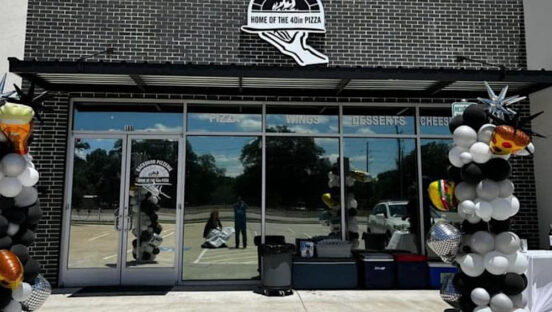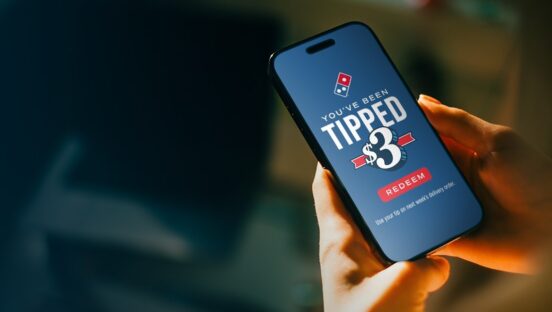By Rick Hynum | Photos by Keith Perks, 1120 Studios
Jim Mirabelli isn’t a pizzaiolo by profession, although he worked in pizzerias as a high schooler and college student. He’s more of a pizza king-maker. A positive review on his website, NEPA Pizza Review, or social media channels can transform a pizza shop’s business overnight.
In his day job, Mirabelli is the business administrator at Abington Heights School District in Clarks Summit, Pennsylvania. But, off-duty, he’s a beloved pizza blogger and influencer, scouring Northeast Pennsylvania in search of amazing pizza. He’s also the cover subject of PMQ’s September 2023 issue, an honor he earned by not only displaying expertise and insight into the craft of pizza-making, but by accruing a fast-growing and loyal following on social media with his fun, punchy videos highlighting all of the pies that catch his discerning eye. He’s closing in on 20,000 followers on Instagram, plus more than 23,000 on Facebook, 3,230 on TikTok and 2,323 on Twitter.
He’s also a genuinely kind person. If he tries a pizza and doesn’t like it, he simply doesn’t review it. Haters gonna hate, and going negative can attract a lot of followers. But that’s not the kind of followers Mirabelli wants.
Related: Old Forge-style pizza is a cut above the rest
There was much more to our cover-story conversation with Mirabelli. In this extended Q&A, he offers a behind-the-scenes peek at NEPA Pizza Review, explains how he rates pizzas in his reviews, and shares more details about the unique pizza styles that folks in Northeast Pennsylvania are crazy about.

PMQ: So who is Jim Mirabelli, and how did you become the pizza influencer that you are today?
Jim Mirabelli: Most importantly, I’m a dad to my two awesome kids, Layla and Jack, and a husband to my beautiful wife, Jaimie. And I would describe myself as a dork who was born and raised in northeast Pennsylvania, a bit of a sports nut who loves to learn about all things, especially useless things. I work hard. I was always raised to work hard. And I always like to play hard and spend time with family and friends. And I happen to have an unhealthy obsession with pizza.
The back story is, I began working in a pizzeria when I was about 14 years old as a dishwasher. And from the first day on the job as a quiet, sort of introverted nerd, scrubbing pots and pans, I fell in love with the restaurant industry. I also became determined to learn to make pizza. You know, watching the pizza guys up front—we had this open window and they’d be throwing the dough. And I just knew it was something I wanted to do. So, over time, my manager taught me, let me learn, and I honed my craft and worked as a pizza maker all throughout high school, college and even on the weekends. The people I met, the places I worked and the pizzas I helped create just made a profound impact on who I am, and that has stayed with me to this day and will last forever.
PMQ: Why do you think pizza had that kind of impact on you?
Mirabelli: I can remember it vividly: I showed up on my first day—wearing probably the nicest polo shirt and pretty good quality jeans for what I had at the time. You know, we don’t come from much, my family, but we work hard for what we’ve got. And so to have shown up, just this gawky kid, afraid to talk to people, I’ll just never forget how they treated me…They never treated me like anything other than one of them. And they showed me everything I needed to know. And you learn life lessons along the way and, man, you know, I just grew up there, and it was a great place where you can learn to thrive….And a lot of those folks in the pizzeria were not people that I would have otherwise befriended. I would have never connected with them.
But, man, those relationships! I still talk to many of them to this day through Facebook messages, and they stay in touch with me through the NEPA Pizza Review page. We were in the trenches together and, you know, it’s just this love of the battle—Friday nights where you batten down the hatches, and we’re just churning out pizzas. Everybody’s doing what they can, working together. And I don’t remember any drama. It was just an amazing time with great camaraderie….I always looked forward to getting crushed on a Friday night. I loved those nights. I didn’t like the slow nights. I really loved being in the trenches there and just sort of going to war together.
Related: Compare and contrast: Old Forge-style pizza vs. pan-fried Sicilian pizza
And I always treated every pizza I ever made as if I was making it for, say, the president of the United States or, you know, the girl I was going to marry. And I always wanted every customer to have that experience. And sometimes I would make this joke: “I’m sorry that you’re going to have this pizza because it’s the best you’ve ever had, and everything else is going to be a letdown.” Of course, that was a joke. But I took a lot of pride in serving a quality product. And everybody around me did, too. And, you know, we’d screw it up, but we would do our best to make it right. And we all understood what the job was: feed people, make them happy, give them a good experience.
PMQ: So you started NEPA Pizza Review in 2012. What was it like in the early days?
Mirabelli: Early on, I would have maybe a hundred followers, and maybe 75 of them were robots. I have no idea. It was that way for a couple of years, as I recall, and I really didn’t care. I wasn’t shooting for likes. It wasn’t about that. And it all just sort of started to evolve. And now I still don’t care about likes. I still don’t care about views. I care about the quality of the conversation and connections I’m making with people. And, oh, my God, the friends and the connections that I have made over the last decade-plus is worth more than anything. There’s no money that can pay for what I have gained here in terms of friendships, connections, experiences, access to people like Tony Gemignani, who is kind of my Michael Jordan or Tiger Woods.

Mirabelli donned a Batman costume for a video that helped him score a partnership with Gozney.
PMQ: So, with already having a fulltime job, how much of your time is devoted to NEPA Pizza Review?
Mirabelli: I’m the type that just has to be busy all the time. So I definitely spend a significant amount of time creating and scheduling content for NEPA Pizza Review, no question. But it doesn’t feel like work to me. I’ve developed sort of a routine and a lifestyle. So, when I wake up in the morning, I’ll create a post or schedule one or send one out If I’m walking on the treadmill at lunch, burning off pizza, carbs and calories. I’ll edit a few videos on my phone walking to the car. When everyone goes to bed in my house, I’m up another two to three hours, banging out articles and scheduling posts for the next few days out and getting back to the folks that have messaged me throughout the day. So it’s a routine. It’s a lifestyle. I’ve never really quantified how much time I spend on it. I would certainly think it’s north of 10 to 20 hours a week.
I struggle with balance a lot of times, and sometimes I’ll catch myself just, you know, buried in my phone at home or something for too long and realize, you know, “You’ve got to be a little more present.” So definitely there’s that. There is a sacrifice there. You know, as far as the reviews, though, I think there’s this misconception that this is what I do for a living. I don’t travel for pizza, but I eat pizza where I travel, whether that’s running an errand, going on vacation or heading to an athletic event for my kids. My family’s very patient and very understanding. They humor me: “Oh, OK, Dad’s got to stop for gravy.” We call that a tray here in Northeast Pennsylvania. So I’ll try a tray, and I’ll be filming in the parking lot or in the car, and they humor me. It all goes back to my family, particularly my wife. Without her being so supportive, I’d never have the time or the wherewithal to do all of this.
Related: Who are the country’s leading pizza influencers for 2023?
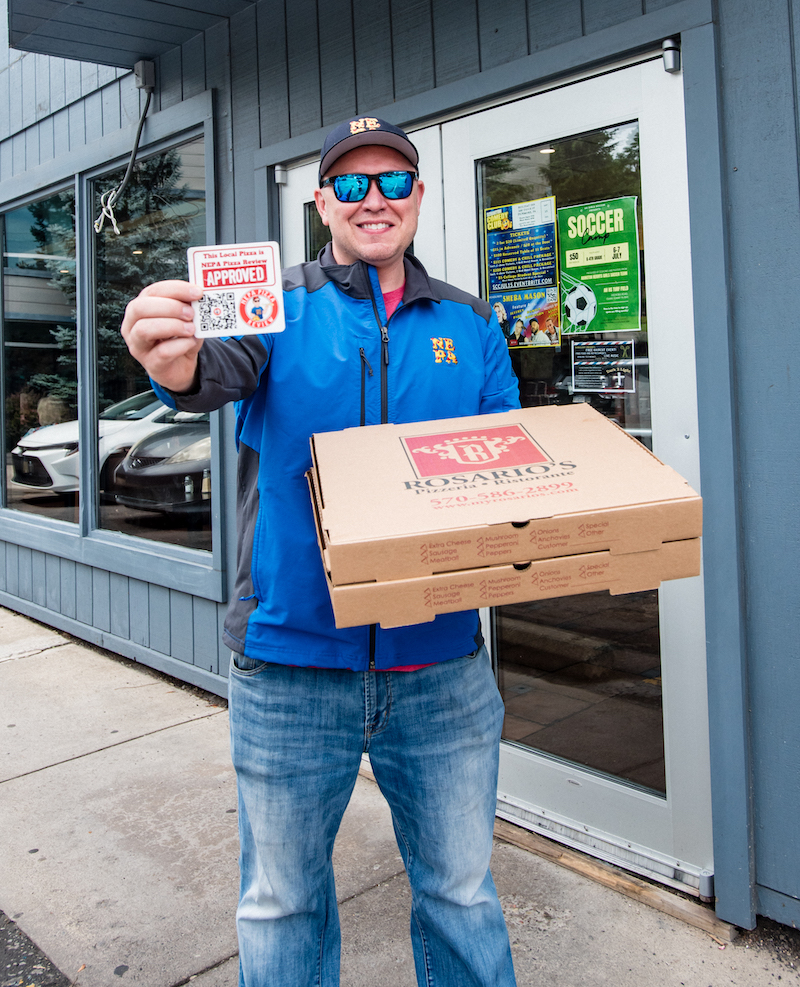
Mirabelli pays a visit to Rosario’s in Clarks Summit.
PMQ: So what area do you cover for NEPA Pizza Review?
Mirabelli: It’s really two counties—Lackawanna and Luzerne. There’s a very high concentration of really, really good-quality pizza and a diversity of pizza in those two counties. We’re talking about the top right corner of the state, the 570 area code.
PMQ: I know you also visit pizzerias in other areas, like Philadelphia, New York and anywhere else you happen to be traveling. How many pizzerias do you visit in a typical month?
Mirabelli: I want to say it averages probably around four a month. Some months I’ll be on fire, like this past June. I hit up four in a day, and then I was in Philly, so I did three places when I was down there. So I probably visited a dozen in that month. But some months, I’ll do maybe just two because I’m trying to reset the health a little bit or I just don’t have time. You know, eating that much pizza does take a toll on you.
But I’m feeling a real impact, and I’m hearing back from those pizzerias. One recently told me his pizza sales have doubled over the last two weeks after my review. And that is something that just drives me to go find another great pizza and share it with people and keep getting those messages out there.
PMQ: I know you don’t do online reviews of pizzas that you didn’t much care for. Tell us about how you make your choices.
Mirabelli: I want to find something I really believe in. And when I find it, I talk about the pizza, the place and the people. When those three align and you share that story and there’s something compelling to tell and a beautiful pizza and a show that’s unique, it blows up. And my followers head there, and it’s really cool to see.
I don’t like to convince anybody to go try a pizza, I like to show people. That’s why I don’t do scores in a video. A score in a video, to me says, this is my numeric opinion, and it’s a binary choice. “He says it’s an 8, so I’m going there.” Well, I don’t believe that that is valuable. What’s valuable is, what is the pizza like? What does it look like? Do you like a blend of cheeses? Do you like a sweet sauce? Do you like to have your crust super crispy? And if I’m showing you something that’s soft and bready and sweet with American cheese on it and you don’t like that, well, move on. Keep scrolling. So that’s really where I come from: Let me describe to you what the pizza is to the best of my ability. And let me show you what it looks like in a fair way.
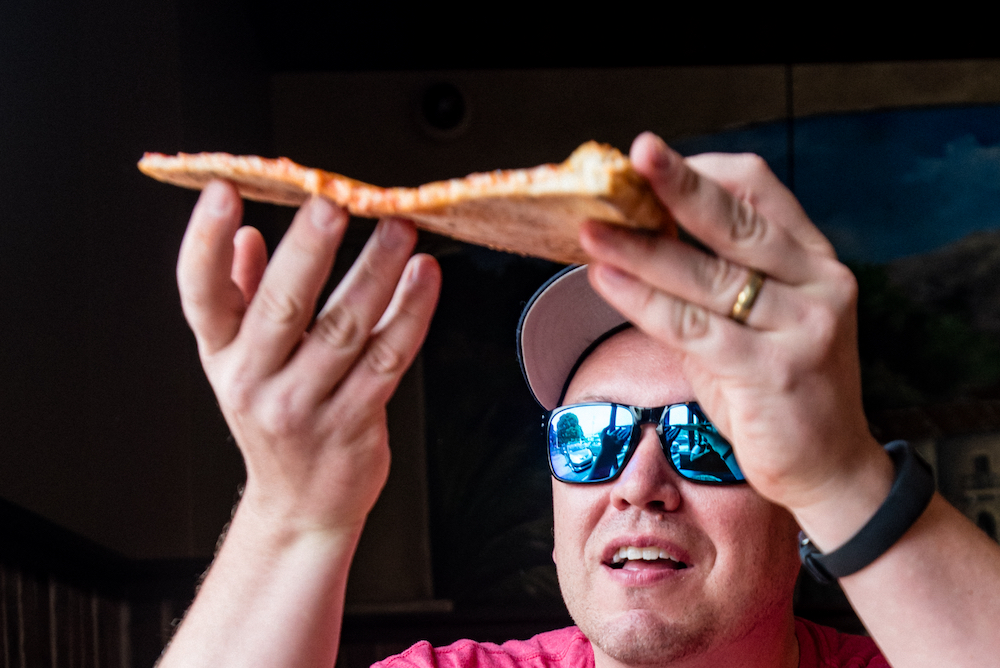
PMQ: I’m curious as to what kind of criteria you use in your reviews?
Mirabelli: So a lot of people will drop an instant score at the end of the video: It’s an 8.6. I don’t do anything like that. I have a master spreadsheet of all of the 600-some pizzas that I’ve reviewed. And I have a rating for the crust, the sauce, the cheese, the taste, how it was cooked, the value score and an overall score. And I average it out to come to an overall score, and then I adjust up or down based on how I feel that it needs to be. In doing so, I’ll think of the three to five most similar pizzas that I’ve reviewed before, and I’ll go over and revisit those because, say, this crust was definitely better than that one, so this score is going to go a little higher. I like to think I put a lot more thought into the review than I otherwise would if I was just giving an instant score on video.
I’m saying, look at the pizza here. Here what it’s about. Decide for yourself. Don’t let a score tell you whether or not you should drive 45 minutes to try the pizza. So that’s why I put the score broken down by those various categories and then the overall score at the very bottom of my articles. And I will write the articles on the website days after I eat the pizza. That gives me a reflection period to say, “All right, I know I felt really good here, or this guy really ticked me off when I was there.” I don’t want any of that emotional bias involved in the review. I don’t know how you eliminate all bias. It’s an opinion at the end of the day anyway. But I do feel that this gives me a chance to level-set compared to others and to accurately score the pizza.
And I can almost vividly recall every pizza I’ve eaten in the last 10 years. I wish I could remember other things as well as I remember the pizza. It’s crazy.
PMQ: Another thing I admire about your reviews is that if you don’t have something nice to say, you don’t say anything at all.
Mirabelli: I will say the temptation is, anything negative plays very well on social media. You can grow [your followers] so fast. Not interested. Not interested. Those are not the followers I’m looking for. I’m looking for people that want to talk pizza with me. That’s it. End of the story.
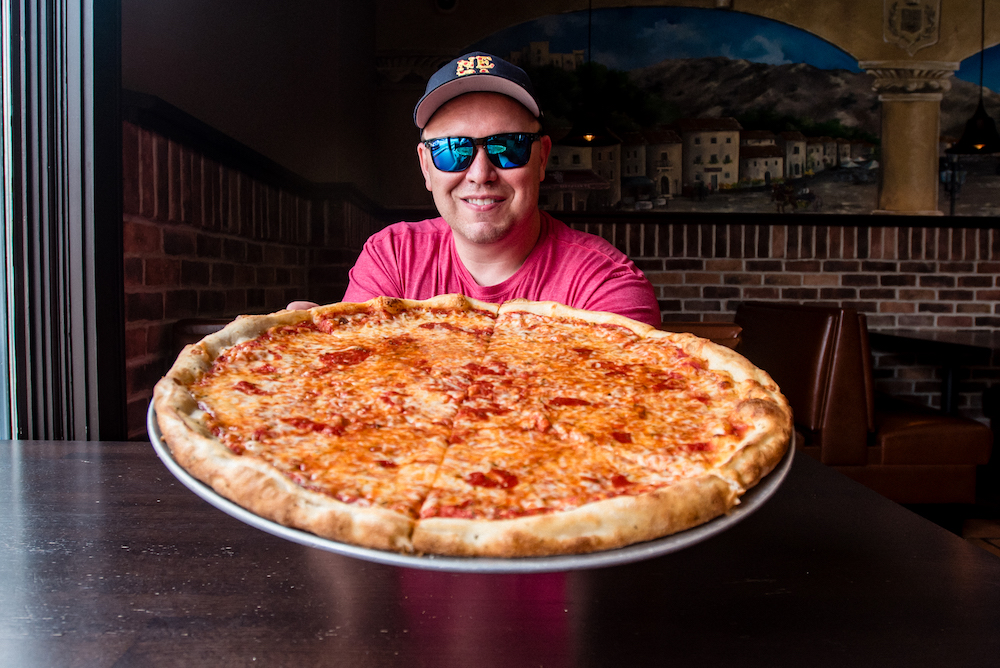
PMQ: So tell us about the most popular pizza styles in the NEPA region.
Mirabelli: We actually have a number of styles here that are unique and native to northeastern Pennsylvania, starting with Old Forge Pizza and pan-fried Sicilian. Old Forge style has some national recognition; Old Forge, Pennsylvania [bills itself as] the pizza capital of the world. But pan-fried Sicilian is just as popular here, but less known elsewhere.
So Old Forge pizza…people want to lump it in with a Sicilian, but it’s more of a thin, tight crumb whereas a Sicilian has some variability in the crumb. And it’s a little bit of a thinner pizza, but it is a pan pizza. This is not the most endearing way to describe it, but it’s a little like a sink sponge. It has that thickness of your average sink sponge and about that density. But it’s light and crisp and chewy. The sauce is more akin to a simmered, sweeter Sunday sauce, like a precooked sauce. And there are usually sweet onions cooked into it, and the cheese is usually a blend.
And a lot of people say, well, Old Forge pizzas: American cheese and pizza. Well, yeah, some are just American cheese on pizza, but, you know, it could be mozzarella or Cooper, provolone, white cheddar. You name it, they’ll put it in there. But it’s a very interesting pizza, and people have a lot of thoughts on it. So it’s a controversial pizza. Generally, if you grew up on it, you like it. Old Forge doesn’t happen to be my favorite style of pizza, but I like it for what it is.
PMQ: What about pan-fried Sicilian?
Mirabelli: This dates back to the 1940s and a place called Victory Pig Barbecue. It’s more similar to a Detroit-style pizza. And it’s really only made in Luzerne County [with one exception].
The difference between pan-fried and regular Sicilian is that, for pan-fried, they dump a ton of peanut oil in the bottom of the pan, up to a full cup. And the dough is like a same-day dough. It’s put in raw, and they use a focaccia dumpling method—we call it punch-downs. They do it three times, and then they’ll put on a raw sauce, which is basically just like crushed chunky and sweet onions on top of it, kind of like the onions you’d find on a McDonald’s burger. And then it’s baked like that, then removed, and sliced cheddar cheese is put on and then it’s put back in to finish baking.
Those are the two styles that we’re most known for. I’d like us to be even more well-known for the pan-fried Sicilian, because people see the Sicilian name, and they go, “Oh, yeah, we have that, too.” No, you don’t. You really don’t. I know you don’t. I look for this stuff daily. I Google-search it every month to see if someone else is offering it. Plus my readers around the nation would probably alert me if something was happening in Colorado or somewhere like that, that they’re all of a sudden doing a pan-fried Sicilian.
PMQ: And what else can pizza fans find in Northeast Pennsylvania?
Mirabelli: We also are known for cold box pizza. It’s kind of like deli pizza here. You know, Philly has the Philly tomato pie, right? We have cold box pizza. It’s like a tomato pie crust with Old Forge sauce on it and then cheese on top, and then they just box it, and you buy it from the bakery box. You could heat it up or not, but most people take it to the beach or the ball game, and you just eat it right out of the cooler. It’s very, very popular in Luzerne County. Every grocery store around here has it. It’s like the kids’ after-school meal.
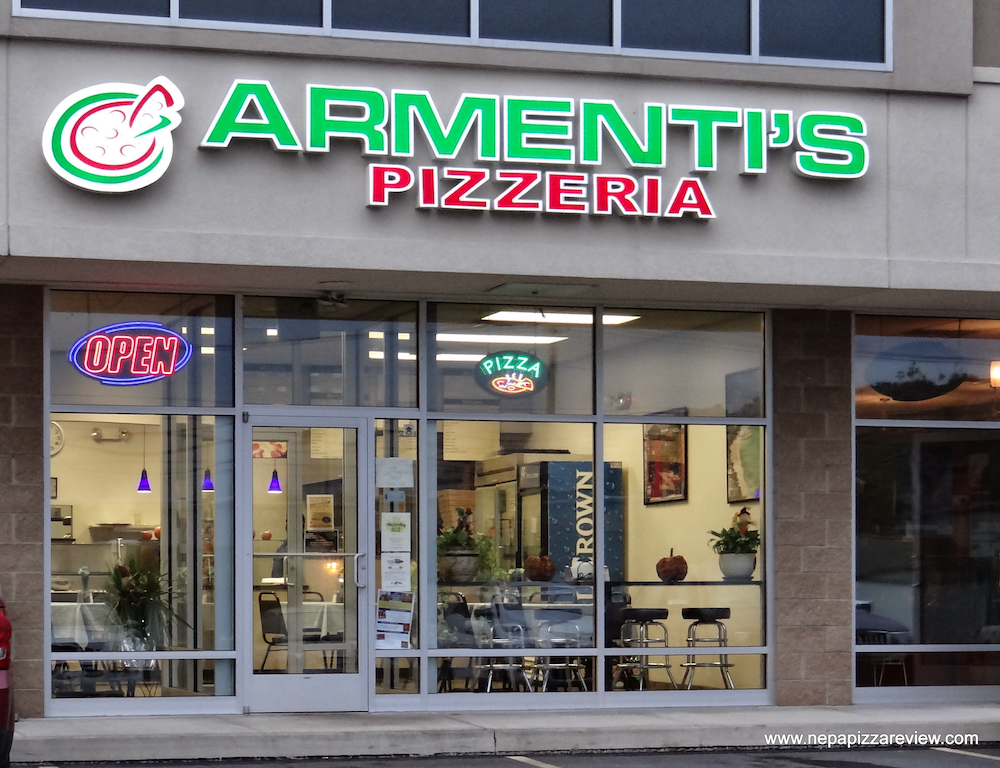
PMQ: Are you willing to name some of your favorite pizzerias in your region?
Mirabelli: There’s one place, Rosario’s Pizza in Clarks Summit—that’s my hometown—and Rosario Bevilacqua makes a diverse set of pizzas, mostly New York-inspired. He makes a grandma pizza that is absolutely incredible. Fantastic Sicilian pizzas. And they deliver a consistent experience. It’s the same every single time. And it’s so rare that you get something that is less than very good.
And I could say the same for my other favorite here, Armenti’s Pizzeria. Giancarlo Armenti is there doing it most of the time—he’s sort of the talent himself. They’re just great people. They make you feel like you’re part of the family the moment you walk in. He’s from Jersey and brings this this Jersey-inspired line-up, which is very similar to the New York line-up that Rosario’s has. But he makes a super-thin Brooklyn-style pizza that’s, like, these giant square slices that are really long…That was one of my most popular videos of all time. And he said he sold a lot of them afterwards. I mean, people were traveling from a long distance to get those slices, so that was really cool to see.
And the other one is Pizza L’Oven, which makes that pan-fried Sicilian pizza. What’s special about Pizza L’Oven is that largely the whole Perhach family works there, and I have no idea how they’re so consistent. It’s mind-boggling, right? They are just a bastion of consistency. It’s amazing. Absolutely amazing. So if you wanted a top three, those are the ones that rattle off my tongue every time.
PMQ: You talked (in the September cover story) about the need for pizzeria owners to view their digital storefronts as even more important than their physical storefronts. What are some other tips for success that you can offer to pizzerias?
Mirabelli: Inconsistency is another problem. But I think one thing that’s correlated with inconsistency is, you see massive menus that are just too much. It’s hard to order from a very expansive menu. And then people don’t know what you actually stand for, and it becomes much easier for you to be inconsistent. Your employees have to learn hundreds of menu items instead of a few core items. So I would encourage pizzeria owners to revisit their menus. Look at what you’re selling and not selling, then trim it down when you need to because your food costs will go down when you have to carry less inventory.
PMQ: What about online ordering and those pizzerias that don’t use it correctly?
Mirabelli: I do believe that’s a barrier for a lot of younger customers—and not just the younger ones. Consumers don’t want to call you. They don’t want to talk to you on the phone. They don’t want to hear a busy signal. There’s no magic in hearing the busy signal 40 times, other than letting me know that you’re busy, which tells me it’s going to be a less than optimal experience because everybody else is ahead of me in line. With online ordering, I get the order in, you tell me when it’s ready, and I’ll head down or you can bring it to me.
PMQ: Is it harder to order online from some of these old-school pizzerias in your area, or are more of them starting to adopt it?
Mirabelli: There are a lot of old-school pizzerias here. We still have some cash-only spots, and some of them have such majesty and tradition that they’re going to be fine, you know what I mean? If you’re a legendary spot and you keep running it the right way, I mean, you’ve been doing something really well since 1940. There’s no sense in changing it. So I’m not saying any of these strategies are good for everybody. But, yeah, I would say there’s more implementation of online ordering, and it’s pretty segmented. I notice we stay away from the bigger [pizza chain] names here, and we try to go for a little bit of a lower-cost option. The Uber Eats are not super popular. Online ordering is offered more by the smaller outfits, and they’re easy to order from, those that do it.
But even if you do offer online ordering, you have to keep that menu up to date. Don’t make them go through these extra clicks. I’m not going to go start an order just to check out your menu. Your menu just has to be there. Let me see it.
PMQ: It seems like a lot of pizzerias in your area don’t use Instagram at all. But their customers are using it, right?
Mirabelli: Yeah, it’s extremely popular with the consumers here. It’s such an opportunity missed if you’re not on Instagram. You can easily become the big fish in a small pond. You could start tomorrow. You could be the fifth best pizza Instagram account in northeast Pennsylvania in six months, whatever that means. The barrier entry is very low, and it’s not hard. You just need to be focused and share some quality content with people.
PMQ: And you need to be front and center as the pizzeria operator, right?
Mirabelli: You know, I struggled with this personally. I never wanted to tell my story. It was never about me. I always wanted it to be about the pizza, but nobody cared until I gave [NEPA Pizza Review] a face and became the central figure. But that’s what I’m saying—the pizza owners being a central figure [for the brand]. I already know you make a great pizza.
And it’s uncomfortable, man. It’s uncomfortable to be in front of a camera. It stinks. You don’t want to screw it up. I’m a one-cut guy. I shoot it, and, you know, if it’s a flub, it’s a flub. What you see is what you get. Sorry, guys. It’s not perfect. I’m not perfect. You know, I want it to feel like it’s a conversation we would normally have sitting at the table while we’re having a pizza together. The pizzeria owner can do the same thing. Give me you.
Rick Hynum is editor in chief of PMQ Pizza.

